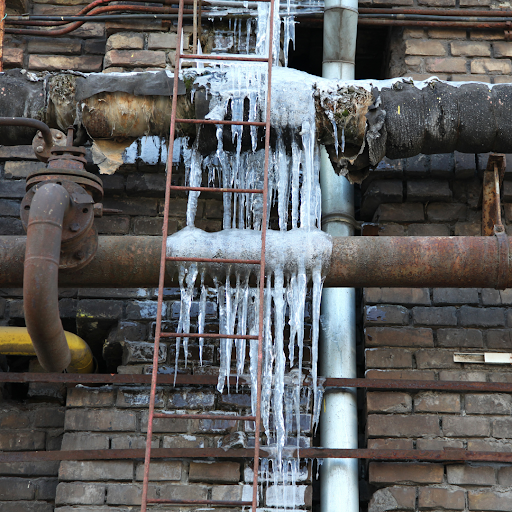Essential Advice for Avoiding Frozen Pipes in Winter Conditions
Essential Advice for Avoiding Frozen Pipes in Winter Conditions
Blog Article
Just about everyone seems to have their own unique idea on the subject of How To Avoid Freezing Pipes.

Cold weather can wreak havoc on your pipes, particularly by freezing pipes. Below's exactly how to stop it from happening and what to do if it does.
Introduction
As temperatures decrease, the danger of frozen pipes rises, possibly leading to pricey repair work and water damage. Comprehending exactly how to avoid frozen pipelines is important for home owners in cool environments.
Avoidance Tips
Insulating susceptible pipes
Wrap pipes in insulation sleeves or utilize warm tape to secure them from freezing temperatures. Focus on pipelines in unheated or outside areas of the home.
Home heating strategies
Keep interior rooms adequately warmed, particularly areas with pipes. Open up cupboard doors to enable cozy air to distribute around pipelines under sinks.
Exactly how to identify frozen pipelines
Search for lowered water flow from taps, unusual odors or sounds from pipes, and visible frost on subjected pipelines.
Long-Term Solutions
Structural adjustments
Take into consideration rerouting pipelines far from outside wall surfaces or unheated areas. Include added insulation to attic rooms, cellars, and crawl spaces.
Upgrading insulation
Invest in top notch insulation for pipes, attics, and walls. Correct insulation aids maintain constant temperatures and decreases the risk of icy pipes.
Safeguarding Outside Plumbing
Yard hose pipes and outdoor taps
Disconnect and drain pipes yard pipes before wintertime. Set up frost-proof faucets or cover outside taps with insulated caps.
Comprehending Icy Pipelines
What creates pipes to freeze?
Pipes ice up when exposed to temperatures listed below 32 ° F (0 ° C) for expanded periods. As water inside the pipes ices up, it broadens, putting pressure on the pipe wall surfaces and potentially creating them to rupture.
Threats and damages
Icy pipelines can bring about water system disruptions, property damage, and costly repair work. Ruptured pipelines can flooding homes and cause comprehensive structural damages.
Indicators of Frozen Piping
Identifying icy pipelines early can avoid them from breaking.
What to Do If Your Pipelines Freeze
Immediate activities to take
If you think icy pipelines, keep faucets open up to eliminate stress as the ice melts. Use a hairdryer or towels soaked in warm water to thaw pipelines slowly.
Conclusion
Preventing icy pipelines requires aggressive procedures and quick feedbacks. By comprehending the causes, indicators, and preventive measures, house owners can shield their pipes throughout cold weather.
5 Ways to Prevent Frozen Pipes
Drain Outdoor Faucets and Disconnect Hoses
First, close the shut-off valve that controls the flow of water in the pipe to your outdoor faucet. Then, head outside to disconnect and drain your hose and open the outdoor faucet to allow the water to completely drain out of the line. Turn off the faucet when done. Finally, head back to the shut-off valve and drain the remaining water inside the pipe into a bucket or container. Additionally, if you have a home irrigation system, you should consider hiring an expert to clear the system of water each year.
Insulate Pipes
One of the best and most cost-effective methods for preventing frozen water pipes is to wrap your pipes with insulation. This is especially important for areas in your home that aren’t exposed to heat, such as an attic. We suggest using foam sleeves, which can typically be found at your local hardware store.
Keep Heat Running at 65
Your pipes are located inside your walls, and the temperature there is much colder than the rest of the house. To prevent your pipes from freezing, The Insurance Information Institute suggests that you keep your home heated to at least 65 degrees, even when traveling. You may want to invest in smart devices that can keep an eye on the temperature in your home while you’re away.
Leave Water Dripping
Moving water — even a small trickle — can prevent ice from forming inside your pipes. When freezing temps are imminent, start a drip of water from all faucets that serve exposed pipes. Leaving a few faucets running will also help relieve pressure inside the pipes and help prevent a rupture if the water inside freezes.
Open Cupboard Doors
Warm your kitchen and bathroom pipes by opening cupboards and vanities. You should also leave your interior doors ajar to help warm air circulate evenly throughout your home.

I found that entry on Preventing and dealing with frozen pipes while doing a search on the web. Sharing is nice. Who knows, you will be doing someone a favor. Bless you for being here. Kindly pay a visit to our website back soon.
Book An Appointment Report this page